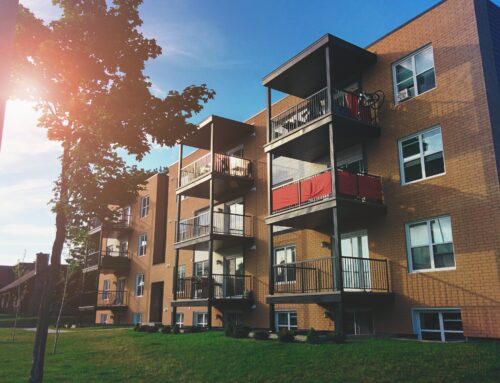In April 2018, construction began on the Réseau express métropolitain, or REM train, in Montreal. The massive, $6 billion infrastructure project promises to bring huge improvements to the city’s public transportation network, with more tracks, new metro stations, and links with suburban neighbourhoods not previously connected to Montreal’s rapid transit system.
The REM project
An ambitious project by any measure, the Réseau express métropolitain will add another 67 km of light rail to the Montreal Metro system. The fully automated, driverless trains will make up the fourth longest automated transportation system in the world, after the Singapore Mass Rapid Transit, Vancouver Skytrain, and Dubai Metro. Completion of the project is expected to take at least 5 years, with current price estimates at around $6.3 billion
Much of the REM network will use existing Metro stations around Montreal, centering around the Mont Royal tunnel. But new stations will open in the city center to provide additional service downtown. This should result in more options and greater convenience for many commuters. More importantly, entirely new lines will reach the Montreal-Trudeau Airport and neighbouring cities like Kirkland and Pointe-Claire on the west end of the island, as well as Brossard on the east side of the Saint Lawrence River.
To the northwest, the REM will serve 12 existing stations on the Deux-Montagnes line, which are being upgraded to meet rapid transit standards. New stations will also open in Grand-Moulin, near the Deux-Montagnes terminus, and in the Saint-Laurent borough at Correspondance A-40, where the REM will connect with the Mascouche line.
In spite of the many benefits the REM project expects to bring to Montreal residents and commuters, critics are concerned about environmental impacts and the effects the new rail could have upon existing lines. For example, the Vaudreuil-Hudson train may lose riders as a result of the newer, faster REM line, possibly resulting in reduced service on the older train that travels further west and off of the island. Also, a change on the Mascouche line will require passengers to disembark and change trains at Correspondance A-40 in order to reach the city center.
The REM’s impact on Montreal real estate
By connecting downtown Montreal with more distant suburbs on the West Island and across the river to the east, the REM train will bring municipalities like Kirkland and Brossard more into the fold of the greater metropolitan area. This should bring those communities into greater proximity with the city centre, and with the entertainment and employment opportunities that Montreal has to offer. Ultimately, this is expected to make those neighbourhoods more desirable, and real estate values are bound to reflect that desirability.
Montreal’s west side
The areas immediately to the west of downtown include some of the most valuable real estate in Montreal, especially Westmount and Montreal West. Currently, the Vaudreuil–Hudson commuter rail line passes through these neighbourhoods and beyond, along the South Shore, and across the river to Dorion, Vaudreuil and Hudson. But the REM will provide greater access, with faster and more frequent service on the west end of the island.
At the westernmost terminus, the Sainte-Anne-de-Bellevue station—due to open in 2023—will have 200 parking spaces, as well as 11 bus platforms, 20 bike racks and 20 drop-off spots. This should put residents of the Vaudreuil-Soulanges region, for the first time, within easy reach of the hustle-bustle of downtown. The Kirkland station, also slated to open in 2023, with 2500 parking spaces, will make the city centre vastly more accessible for the 20,000 people who call Kirkland home.
The commute from Sainte-Anne-de-Bellevue to central Montreal is about 30 minutes without traffic. But there’s always traffic, and sometimes the drive along Highway 20 takes more like an hour an a half. No wonder then that West Island residents are so eager to see the opening of this new line, especially those who work downtown.
Currently there are some terrific deals on some very spacious homes out in this less populated part of the island. But bringing the towns like Kirkland and Senneville closer to the city centre is almost certain to drive property values upward. There is some concern about traffic however, and the thousands of cars potentially pouring in from the Vaudreuil-Soulanges region across the river to reach the new REM terminus Sainte-Anne-de-Bellevue.
Brossard
On the other side of downtown, three REM stations are being built at Panama, Du Quartier (for the DIX30 commercial district), and Rive-Sud. As of now, the Yellow Line that runs beneath the Saint Lawrence River extends only as far as Longueuil at the Université de Sherbrooke. This provides a vital link between Montreal and Longueuil, on either side of the river, but leaves thousands of households in Brossard out of reach, as well as some great swaths of land that many consider ripe for development.
With the opening of the new line that runs all the way to Rive-Sud, most analysts expect property values in the Brossard suburbs to rise. Construction is likely to increase in this rather sparely populated area where land has long remained inexpensive. Devimco Immobilier already has a bold new project underway, which actually began even before the official announcement of the REM. The $1.3-billion mixed-use Solar Uniquartier will include a hotel, office and retail space, residential units, and a public square. Newer revisions added a direct pedestrian link to the nearby REM station.
For the time being, however, most observers seem far more concerned with the impact of REM construction on noise and traffic. But it’s like they say, “REM wasn’t built in a day!”
Further reading
To learn more about housing, neighbourhoods and real estate in the beautiful city of Montreal, take a look at some of these other in-depth articles.
- Online Relocation Guide for Montreal
- Montreal real estate tips and trends
- Burroughs of Montreal
- French and English speaking neighbourhoods of Montreal
PHOTO CREDIT: REM train route through Montreal (Wikipedia)







Leave A Comment